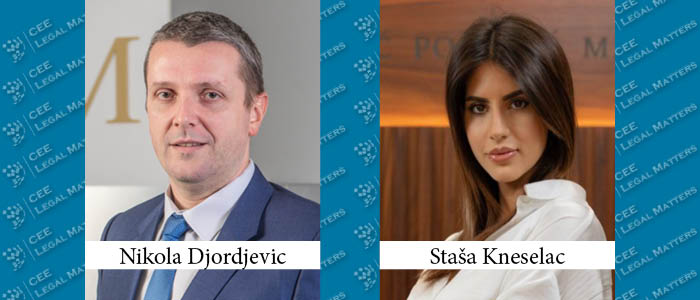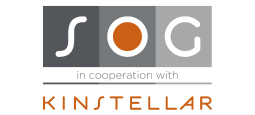The Republic of Serbia applies different taxes to reimbursement payable to engaged individuals depending on their engagement type. Those engaged via employment agreement, are subject to salary tax and those engaged via service agreement are subject to tax on other income. Those engaged via temporary and periodical employment agreements are subject to either salary tax or tax on other income while those engaged on the basis of supplementary work are only subject to tax on other income.
Salary tax
In terms of Individual Income Tax Law (hereinafter referred to as: “Law”), salary tax is calculated upon employment agreement or temporary and periodical employment (except for individuals up to 26 years of age receiving education executed through youth or students’ co-operatives) i.e. on salary or contractual reimbursement and other incomes.
Salary can be determined and paid in pecuniary amounts, but also in bonds, securities, and other non-pecuniary forms including providing benefits.
The tax base for salary tax is gross salary, reduced to RSD 21,712 for individuals engaged on the basis of full-time employment contracts.
The tax rate for salary tax is 10%.
Tax on other income
In terms of the Law, tax on other income is calculated upon, inter alia, service agreement; supplementary work agreement; temporary and periodical employment agreement for individuals up to 26 years of age receiving education executed through youth or students’ co-operatives; and rewards and other similar payments over RSD 16,666 to individuals who are not employed with the employer.
The tax base for tax on other income is gross income reduced by statuary costs of 20%.
The tax rate for tax on other income is 20%.
Besides apparent differences between the two, in tax base and tax rate, additional contrast lies in the existence of tax incentives only in terms of salary tax, while there are no tax incentives for tax on other income.
II Tax incentives for salary tax
There are two types of incentives, one that provides relief in terms of the type of reimbursement and the other one that provides relief in terms of the engaged individual.
The Law stipulates the following reliefs for different individuals:
- New employees – individuals engaged on the basis of employment agreement who were registered before the National Employment Agency for the period of 6 months prior to the employment.
The relief of 65% is applied for the remainder of the year for companies that employ at least one new employee; 70% is applied for the remainder of the year for companies that employ from 10 and up to 99 new employees; and 75% for companies that employ at least 100 new employees.
For small and micro companies, the partial relief of 75% is applied if they employ at least 2 new employees.
For newly incorporated companies that employ its owner, the relief is intended for the salary tax of the owner in the period of 12 months if the net salary does not exceed the total of RSD 37,000.
For companies engaged in innovative activities (as defined in the Law) that employ its owner, the relief is intended for the salary tax of the owner in the period of 36 months if the net salary does not exceed the total of RSD 150,000.
For employees employed between 1 March 2022 and 31 December 2022 who were not registered with social security funds as an employee, an entrepreneur, or a founder who is employed and whose monthly salary exceeds RSD 76,500, in partial relief of 70% up to 2024.
- Employees with disabilities – individuals with medical documentation confirming disability. The relief is applied for the period of 3 years since the employment.
- Employees engaged in research and development – Companies engaged in research and development activities have partial relief of 70% for the salaries of employees engaged in these activities.
According to the Law on Contributions for Mandatory Social Insurance, the same reliefs are applied in terms of social security contributions.
III Tax incentive analysis
Bearing in mind various tax incentives determined by the Republic of Serbia, we can confidently conclude that the Republic of Serbia has a clear intention to direct employers to engage individuals in employment agreements, rather than engagement outside of the employment agreement. Employers should be less reluctant to employ new individuals and extend their business, bearing in mind that the state is partially or fully releasing them from tax obligations. The engagement outside of the employment agreement does not necessarily lead to more permanent engagement of the individuals, therefore, no incentives are provided for such, usually short, engagement. For employees, the benefit of having a more permanent engagement is likely preferred, while employers can benefit from tax incentives determined solely for long-term engagement.
Setting aside various special categories e.g. innovative activities, disability, research and development, etc., as presented above, we will shift our focus to freshly developing companies and their employees.
From a new employer’s point of view, comprehension of tax incentives enables employers to optimally organize their business resources. New market participants face many challenges in the initial phase of starting a new business or entering a new market. Costs could be very high and demanding. For these reasons, new employers should be aware of all reliefs provided by the state in order to minimize expenses and sufficiently use available resources. For starters, it is necessary to get familiar with these tax regulations and do some basic math.
Firstly, an employer identifies which tax incentive may be applicable in regard to the size of the company (according to the Accounting Law) it intends to incorporate.
Examples
First employee - The relief of 65% is applied for the remainder of the year for companies that employ at least one new employee regardless of the company size.
2 employees – for small and micro companies, the relief increases to 75%, while for middle and large companies, the relief remains at 65%.
10 and up to 99 new employees - for middle and large companies intending to employ from 10 and up to 99 employees, the relief increases to 70%
at least 100 employees – the relief increases to 75%
Now, Math.
For the purpose of calculating, we will use median net income from May 2023 in the Republic of Serbia, in accordance with the latest available publication on incomes from the Statistical Office of the Republic of Serbia which amounts to RSD 66,244.
In order to understand the numbers, let’s say we are incorporating a company intending to engage employees with salaries equal to the median salary in the Republic of Serbia.
|
|
no incentive |
65% |
70% |
75% |
|
Median net income in the Republic of Serbia |
66,244 |
|
|
|
|
Gross income amount |
91,402 |
|
|
|
|
salary tax |
6,969 |
4,529.85 |
4,878.3 |
5,226.75 |
|
Contributions for employee |
18,189 |
11,822.85 |
12,732.3 |
13,641.75 |
|
Contributions for employer |
13,847 |
9,000.55 |
9,692.9 |
10,385.25 |
|
Total cost for the employer |
105,249 |
79,895.75 |
77,945.5 |
75,995.25 |
|
Total relief per employee |
0 |
25,353.25 |
27,303.5 |
29,253.75 |
Putting math to work
First employee – Our cost for the first employee would be RSD 79,895.75 regardless of the size of the company we chose to incorporate.
2 employees – if we lean towards small and micro companies, the relief increases to 75% for having two employees with an average cost of RSD 75,995.25 per employee, while for middle and large companies, we stay at 65% relief, i.e. RSD 79,895.75 per employee.
10 and up to 99 new employees -if we are still a small or a micro company, we stay at 75 % while for middle and large companies, the relief increases from 65% to 70% and the average cost of an employee amounts to RSD 77,945.5.
at least 100 employees – Lastly, if our company decides to employ at least 100 employees, the applicable relief totals 75%, and the average amount per employee is RSD 75,995.25.
If we go further into the calculation, we shall find that it causes less expense to the employer to employ 100 employees rather than 99. Furthermore, the total cost for 99 employees for our middle or large company would be RSD 7,716,604.5 while for 100 employees the total cost would amount to RSD 7,599,525. This means that if our company employs one additional employee – not only will it increase its workforce - it will also save money.
Conclusion
Our opinion is that even with well-shaped existing tax incentives, there are, however, still steps to be taken to further relieve employers and incentivize them to engage more employees.
Especially, the government could consider proposing smaller gaps between the number of employees needed for switching from one relief category to another. This shall stimulate "smaller companies" to employ a larger number of employees in order to move to another category and increase their benefits.
We are of the stand that 100 employees is a very large number for the capacities of the majority of the companies in the Republic of Serbia. According to the 2022 Yearly Report of the Business Registers Agency of the Republic of Serbia, there are 93,064 micro companies employing 227,237 employees (average 2.44); 13,172 small companies employing 333,356 employees (average 25.30); 2,092 middle companies employing 270,770 employees (average 129.43); and lastly, 528 large companies employing 450,049 employees (average 852.36). Micro companies represent 85,5% of all companies, meaning that micro companies are, by far, the most common size of companies.
Another thing that remains unclear concerns newly incorporated companies that employ their owners. It is obscure as to why this incentive only applies to net salaries that do not exceed the total of RSD 37,000. For what reasons a salary higher than the prescribed amount could not be subject to tax incentives intended for employees?
Another thought is that there should be more incentive categories that could be applicable for smaller increases in the number of employees. Or, preferably, a higher (percentage-wise) gap between existing categories. The difference between having 9 and 10 employees does not provide the same benefit as the difference between having 99 and 100 employees (according to the math above), therefore it still won’t be attractive to employers to employ extra employees. In the 9 to 10 gap, there is no extra relief for small and micro companies, while for middle and large companies, the incentive is not prescribed to sufficiently stimulate employers. Reverting to the median salary in the Republic of Serbia, the cost for an employer (middle/large company) to engage 9 individuals is RSD 719,055, while the cost for engaging 10 individuals is RSD 779,455. More precisely, it is still more expensive for the employer to employ an additional employee, therefore not much effort will be made in terms of engaging more persons in order to switch to another incentive category that provides bigger benefits.
Even though the incentives are intended to make a difference from the very first employee, our opinion is that creating additional categories between 1 and 100 will be beneficial to both employees and employers.
Whatever the direction the government decides to take, it remains indisputable that all future employers should get familiar with these tax regulations in order to maximize the use of benefits provided by the state. Good and efficient tax planning can save a lot of money!
By Nikola Djordjevic, Partner, and Stasa Kneselac, Associate, JPM




